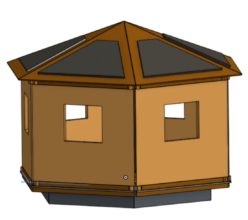People often ask, why reconstructability matters.
In a nutshell: Because construction produces far more waste and consumes more energy as we think.
We should aim to reuse material and reduce the usage of concrete
Some key factors of the construction industry
For some reason unknown most of us ignore that the construction industry
-
- produces more 1/3 of the waste
- consumes about 1/3 of energy and raw materials
- creates about 1/3 the CO2 emissions – more then the whole aviation industry
In industrialized countries the percentage is much higher – up to 84%, as you can read in the waste report of the Swiss government.
Some key factors for the bad ecological balance
The ecological problem in construction has 2 major aspects:
-
- The industry only thinks about building a house forever. Although more and more houses get demolished early, no major player has a sustainable concept how to disassemble a house and reuse its parts.
- the industry is limiting itself mostly on concrete and steel construction. As concrete is the biggest contributor to waste and pollution, the missing alternatives are fatal for the bad ecological balance of the industry
Here you can find more information about the concrete problem
Ways to improve the ecological balance of building
Circle economy – reuse material in the construction industry
Reusing construction material is a key factor to improve sustainability in the building industry.
We designed the Reconstructable House from scratch with the idea in mind to disassemble all parts easily from hand without demolition. Like this we can save energy during production, assembly and disassembly and maximize reuse.

Reduce the usage of concrete
The second key factor is the replacement of concrete with an engineering solution that provides a similar stability. The reconstructable house uses regenerative resources like wood which have a better ecological foot print. The speciality of its construction is to reinforce the critical zones and connections with thin layers of steel and other materials. This makes the construction very light and robust.
